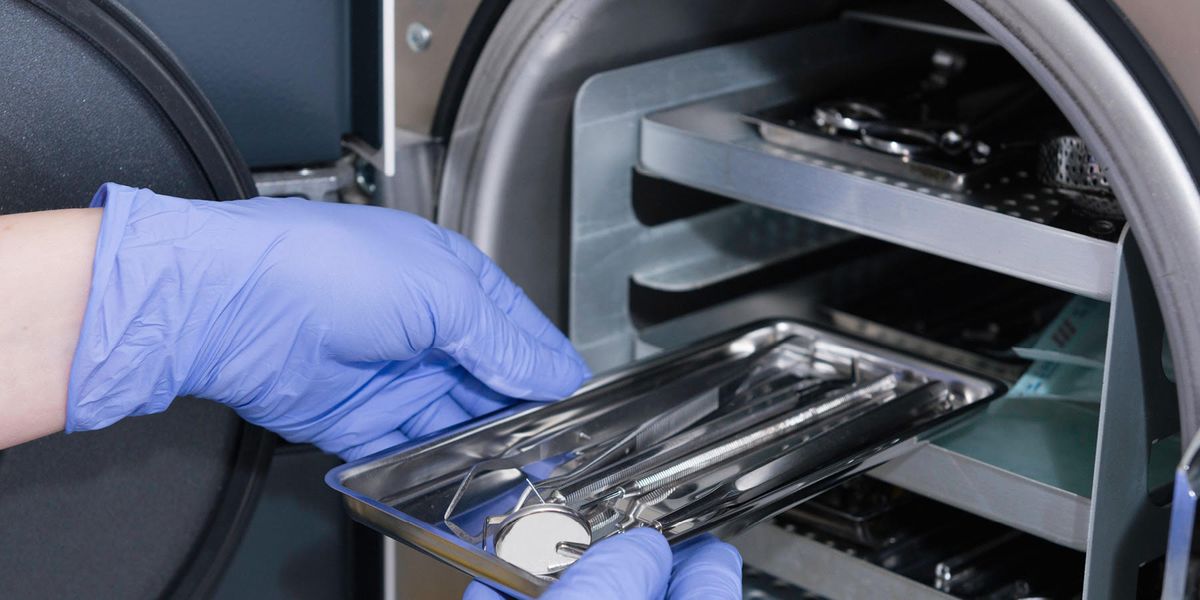The Medical Instruments is a field of study that focuses on the design, development, and implementation of medical devices and systems used in the diagnosis, treatment, and monitoring of medical conditions. It is a rapidly growing field that is essential to the advancement of modern healthcare. Medical instrumentation is used to measure, monitor, and analyze physiological signals and parameters, such as blood pressure, heart rate, and temperature. It also includes the development of medical imaging systems, such as X-ray, ultrasound, and MRI, as well as robotic surgical systems. Medical instrumentation is a complex and interdisciplinary field that requires knowledge of engineering, physics, and biology. It is an exciting field that is constantly evolving and improving the quality of healthcare.
Medical Instruments on Patient Care and Outcomes
The use of medical instruments has had a profound impact on patient care and outcomes. Medical instruments are used to diagnose, treat, and monitor a variety of medical conditions. They are essential tools for healthcare professionals, allowing them to accurately assess a patient’s condition and provide the best possible care.
Medical instruments can be used to diagnose a wide range of conditions. For example, imaging technologies such as X-rays, CT scans, and MRIs can provide detailed images of the body’s internal structures, allowing doctors to identify and diagnose a variety of conditions. Other instruments, such as endoscopes, can be used to examine the digestive system and detect abnormalities.
Medical instruments can also be used to treat a variety of conditions. For example, lasers can be used to remove tumors or repair damaged tissue. Endoscopes can be used to perform minimally invasive surgeries, such as gallbladder removal. In addition, medical instruments can be used to monitor a patient’s condition, such as heart rate or blood pressure.
The use of medical instruments has had a significant impact on patient care and outcomes. By providing detailed images of the body’s internal structures, medical instruments allow doctors to accurately diagnose a variety of conditions. In addition, they can be used to perform minimally invasive surgeries and monitor a patient’s condition. As a result, medical instruments have improved the quality of care and outcomes for patients.
How to Choose the Right Medical Instrument for Your Practice

Choosing the right medical instruments for your practice is an important decision that can have a significant impact on the quality of care you provide to your patients. With so many different types of instruments available, it can be difficult to know which ones are best suited for your practice. Here are some tips to help you make the right choice.
First, consider the type of procedures you perform most often. Different instruments are designed for different types of procedures, so it’s important to select instruments that are specifically designed for the procedures you perform. For example, if you specialize in orthopedic surgery, you’ll need instruments that are designed for that type of surgery.
Second, consider the quality of the instruments. High-quality instruments are essential for providing the best care to your patients. Look for instruments that are made from durable materials and have been tested for accuracy and reliability.
Third, consider the cost of the instruments. While it’s important to invest in quality instruments, you also need to consider your budget. Look for instruments that offer the best value for your money.
Finally, consider the availability of the instruments. Make sure that the instruments you choose are readily available from reliable suppliers. This will ensure that you can get the instruments you need when you need them.
By following these tips, you can ensure that you choose the right medical instruments for your practice. With the right instruments, you can provide the best care to your patients and ensure that your practice runs smoothly.
The Pros and Cons of Different Types of Medical Instruments

Medical instruments are essential tools used by healthcare professionals to diagnose, treat, and monitor patients. Different types of medical instruments are available, each with its own advantages and disadvantages. This article will discuss the pros and cons of the most common types of medical instruments.
Stethoscopes are one of the most widely used medical instruments. They are used to listen to a patient’s heart and lung sounds. The main advantage of a stethoscope is that it is relatively inexpensive and easy to use. Additionally, it is a non-invasive tool that can be used to quickly assess a patient’s condition. However, the accuracy of a stethoscope is limited and it can be difficult to differentiate between different sounds.
Otoscopes are used to examine the ears, nose, and throat. They are typically used to diagnose ear infections and other ear-related conditions. The main advantage of an otoscope is that it is a relatively inexpensive and non-invasive tool that can be used to quickly assess a patient’s condition. However, the accuracy of an otoscope is limited and it can be difficult to differentiate between different sounds.
Endoscopes are used to examine the internal organs and tissues of the body. They are typically used to diagnose digestive and respiratory conditions. The main advantage of an endoscope is that it is a highly accurate tool that can be used to diagnose a wide range of conditions. However, endoscopes are expensive and require specialized training to use.
Ultrasound machines are used to create images of the internal organs and tissues of the body. They are typically used to diagnose a wide range of conditions, including pregnancy. The main advantage of an ultrasound machine is that it is a highly accurate tool that can be used to diagnose a wide range of conditions. However, ultrasound machines are expensive and require specialized training to use.
In conclusion, different types of medical instruments have their own advantages and disadvantages. Stethoscopes, otoscopes, endoscopes, and ultrasound machines are the most common types of medical instruments. Each of these instruments has its own advantages and disadvantages, and healthcare professionals should consider these factors when selecting the best instrument for their needs.
The Benefits of Automated Medical Instruments
Automated medical instruments are becoming increasingly popular in the medical field due to their ability to provide accurate and reliable results. Automated medical instruments are designed to reduce the amount of time and effort required to perform medical tests and procedures. This technology can be used to diagnose and treat a variety of medical conditions, from simple illnesses to complex diseases.
The use of automated medical instruments can provide a number of benefits to both patients and medical professionals. For patients, automated medical instruments can provide faster and more accurate results than manual methods. This can help to reduce the amount of time spent waiting for results and can also reduce the risk of errors. Automated medical instruments can also provide more detailed information than manual methods, allowing for more accurate diagnoses and treatments.
For medical professionals, automated medical instruments can help to reduce the amount of time spent on manual tasks. This can help to free up time for more important tasks, such as patient care. Automated medical instruments can also help to reduce the risk of errors, as they are designed to be more accurate than manual methods. Additionally, automated medical instruments can help to reduce the cost of medical procedures, as they are often more efficient than manual methods.
Overall, automated medical instruments can provide a number of benefits to both patients and medical professionals. This technology can help to reduce the amount of time spent on manual tasks, reduce the risk of errors, and provide more accurate results. Automated medical instruments can also help to reduce the cost of medical procedures, making them a valuable tool in the medical field.
The Latest Advances in Medical Instrument Technology

Medical instrument technology has advanced significantly in recent years, allowing for more accurate diagnosis and treatment of a variety of medical conditions. This article will provide an overview of some of the latest advances in medical instrument technology.
One of the most significant advances in medical instrument technology is the development of robotic surgical systems. These systems allow surgeons to perform complex procedures with greater precision and accuracy than ever before. Robotic surgical systems are equipped with advanced imaging technology, which allows surgeons to view the surgical site in real time. This technology also allows surgeons to make more precise incisions and reduce the risk of complications.
Another important advance in medical instrument technology is the development of 3D printing technology. This technology allows medical professionals to create custom-made medical instruments and implants. 3D printing technology can be used to create prosthetics, implants, and other medical devices with greater accuracy and precision than ever before. This technology has the potential to revolutionize the way medical professionals treat patients.
In addition, medical instrument technology has advanced significantly in the area of imaging. Medical imaging technology has become increasingly sophisticated, allowing for more accurate diagnosis and treatment of a variety of medical conditions. For example, MRI and CT scans can provide detailed images of the body, allowing doctors to diagnose and treat conditions more accurately.
Finally, medical instrument technology has also advanced in the area of diagnostics. Diagnostic tests such as blood tests, urine tests, and genetic tests can provide doctors with valuable information about a patient’s health. This information can help doctors make more informed decisions about treatment.
These are just a few of the latest advances in medical instrument technology. As technology continues to evolve, medical professionals will be able to provide more accurate diagnosis and treatment of a variety of medical conditions.
Conclusion
Medical instrumentation is an important field of study that has enabled medical professionals to diagnose and treat patients more effectively. It has also enabled medical researchers to develop new treatments and therapies for a variety of diseases and conditions. The advances in medical instrumentation have improved the quality of healthcare and have helped to save countless lives. As technology continues to evolve, medical instrumentation will continue to play an important role in the advancement of medical science.
